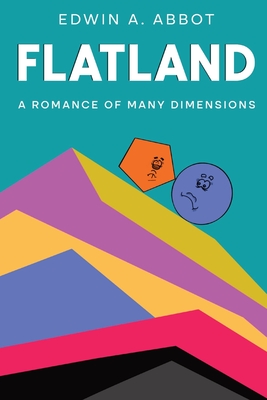Section 8: Of the Ancient Practice of Painting
bySection 8 begins with a clear sense of monotony that defines everyday life in Flatland. While societal issues such as conflict and rebellion exist, they fail to provide the kind of visual or emotional variation that brings richness to life. The world is composed entirely of straight lines, where perception is limited to variations in brightness and shade. This lack of depth or curvature deprives inhabitants of artistic pleasure. There are no paintings, no landscapes, no expressions of individuality through visual form. Unlike Spaceland, where color, shape, and perspective enrich the senses, Flatland remains flat not only in geometry but in experience. This stripped-down reality may function with logic and order, but it leaves little room for imagination or emotional engagement. It’s a world of sharp rules and limited vision, where daily life runs smoothly, but without wonder.
In earlier times, however, a spark of beauty lit up this flat realm. According to Flatland’s oral tradition, a great change began with the accidental discovery of color by a visionary Pentagon. Though his name has faded from memory, his impact remains significant. He began by painting his home, his property, and eventually himself, introducing a visual contrast never seen before. This act transformed not only surfaces but perception itself. The introduction of color made recognition faster and more precise, reducing confusion among similarly shaped figures. People could now identify others at a distance without needing to feel them—a small but powerful leap in how they connected. It wasn’t just practical; it was also deeply appealing. Soon, others followed, eager to experience the same ease and beauty in their own lives.
At the center of this movement was Chromatistes, whose name is remembered even when others are not. He painted himself so vividly that his body became a beacon—instantly recognizable and impossible to ignore. No one needed to ask who he was or where he faced; his color did all the talking. He moved with an elegance that geometry alone could not provide. His bright exterior did not change his shape, but it changed how people treated him. Color brought him respect and attention, turning mere appearance into a kind of soft power. His innovation introduced a form of non-verbal communication, where visibility and expression blended seamlessly. Others began to realize that beauty could influence not just mood, but social standing.
The spread of color throughout Flatland transformed more than just aesthetics—it reshaped the social fabric. People used color to express identity, distinguish rank, and enhance daily interactions. A simple coat of paint could make a triangle more confident or a square more recognizable. This new layer of expression brought an emotional and visual vibrancy to a world that had previously relied only on shape and voice. However, the benefits were not without consequences. As color grew in popularity, it began to challenge the old hierarchy built on geometry alone. Those in power, who once stood apart through perfect regularity, now had to compete with those who could stand out through art. It was an evolution not only of perception but of prestige.
Despite the flourishing of color, not everyone approved. The ruling Circles, who upheld tradition and order, saw the rise of color as a threat. To them, geometry was sacred and identity must remain fixed. With color, identity became fluid and changeable, making social control more difficult. They feared that respect would become tied to visual charm rather than structural perfection. What had begun as a celebration of expression soon became a political concern. The elite moved to suppress the color movement, portraying it as frivolous, dangerous, and morally suspect. Eventually, policies were passed, and the use of color was restricted or banned altogether. Flatland returned to its grayscale world—not because people desired it, but because those in power demanded it.
What remains now is the memory of a time when art reshaped society. Chromatistes became a legend, not for conquering lands or writing laws, but for changing how people saw one another. His contribution, though erased from practice, lives in the collective subconscious of Flatland. It stands as a reminder that beauty and innovation are not luxuries—they are forces capable of inspiring change. Even in the strictest of systems, a spark of creativity can disrupt the status quo. The story of color in Flatland is not just about decoration. It’s about how a single idea, when shared, can brighten a world that has forgotten how to dream.


